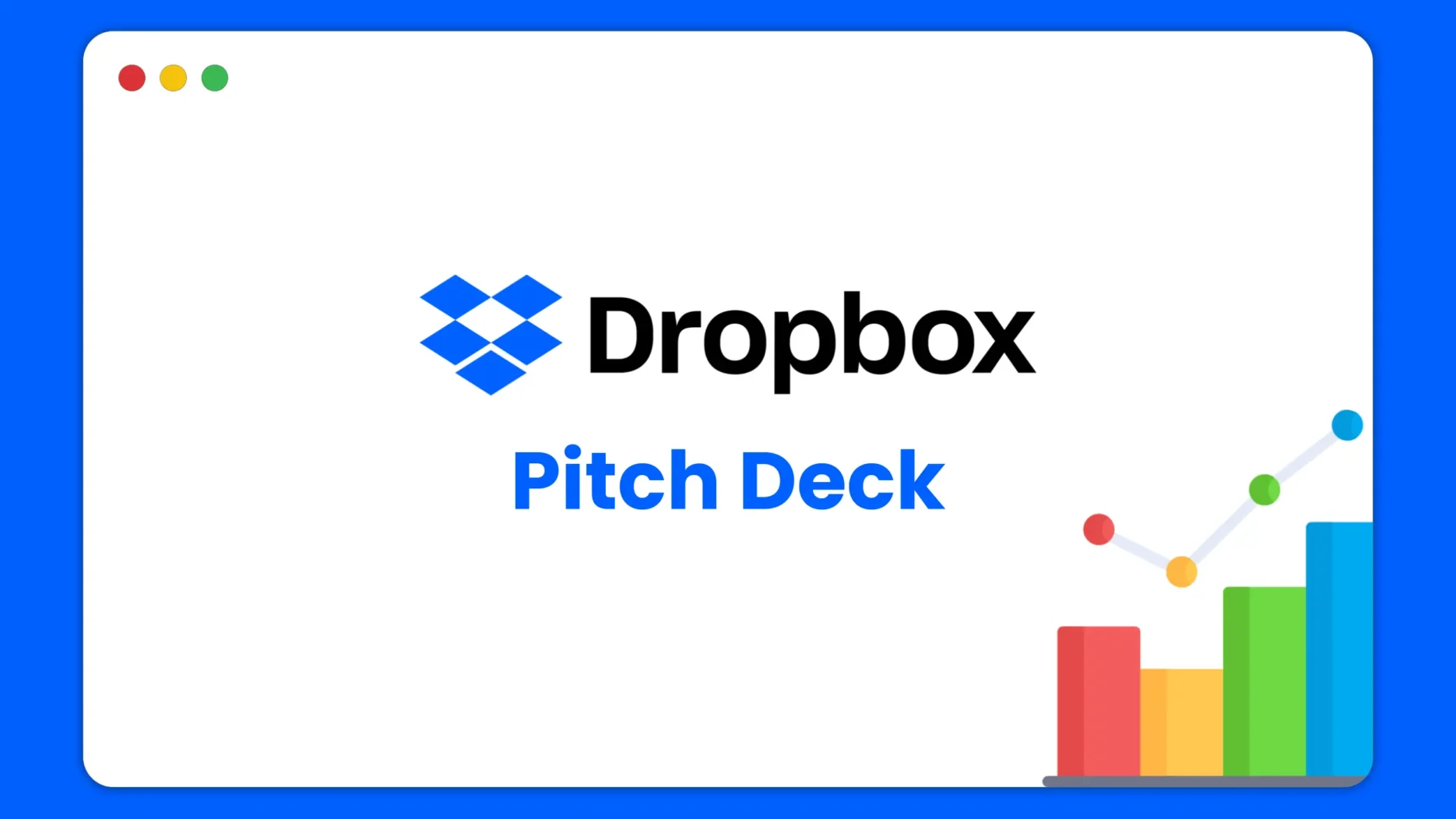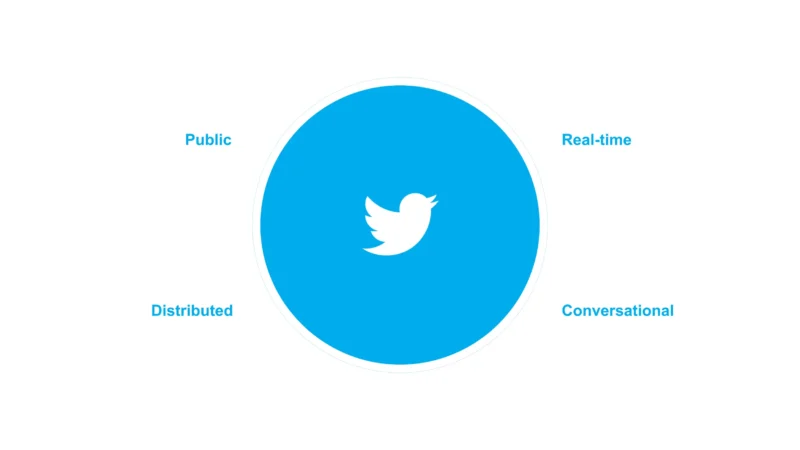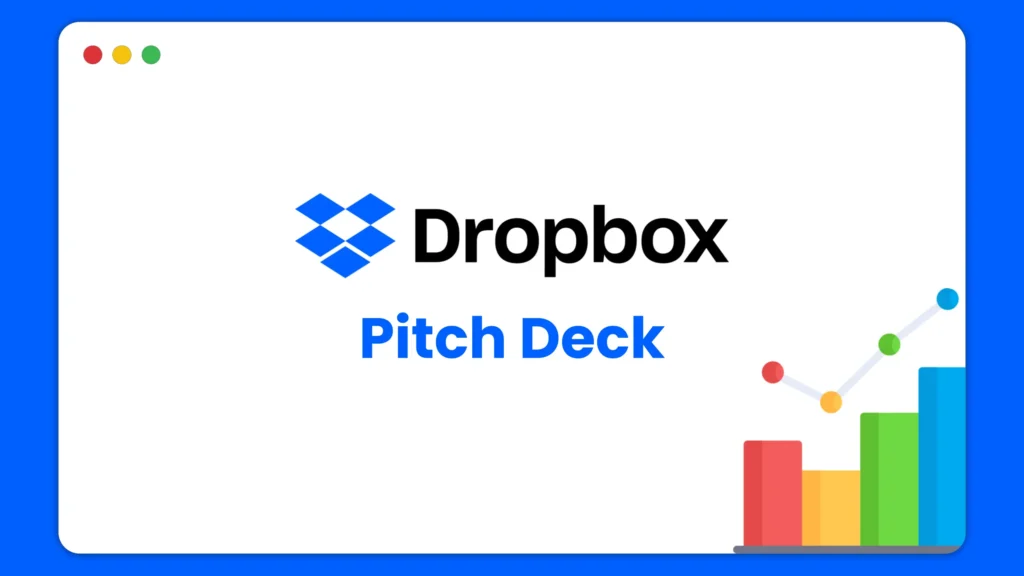
Not a lot of companies create an online storage solution like Dropbox and end up going public with a market cap of over $7 billion. But if we back up, we’ll find that Dropbox started with a simple pitch deck that helped them raise over $1.2 million in seed funding. So let’s look at it and analyse it.
Dropbox Pitch Deck PDF Download
Firstly, I understand that some people would be just looking for the deck. I was very frustrated when I was trying to find this deck myself. So let me make it easier. You’ll find the download link of the PDF below this paragraph. Alternatively, you can check out my analysis below. I’ve been analyzing the business world for over ten years, so this could be very beneficial to you.
Dropbox Pitch Deck Analysis
We’ll go slide by slide as they’re only seventeen slides. Dropbox started in 2008; that’s a very long time ago. Hence, before you start looking at the deck, don’t expect a beautiful design.
This is one of my favorite decks as it’s very simple to understand and appeals to a wide audience.
Slide 1 – Dropbox Elevator Pitch
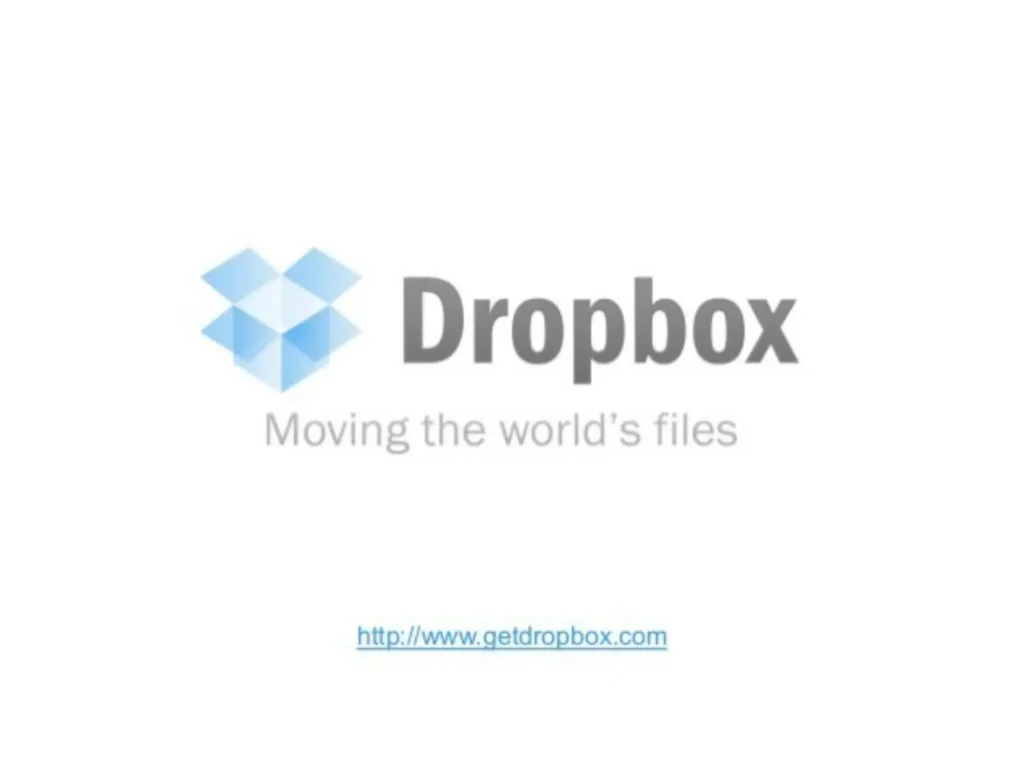
They hit off with their slogan – “Moving the world’s files.”
At that moment, you, the reader, would know what industry they’re probably referring to. Interestingly, if I had to guess, they put their link as getdropbox instead of dropbox as they hadn’t yet purchased the domain at that time (but that’s just a guess.)
Slide 2 – Problem

Remember how I told you this deck appeals to a large audience? This is why. The second slide shows a picture of why storage was a problem in 2007. You could mention in your pitch deck many points of the problems you are trying to solve. But sometimes, a picture could say a thousand words. This is the case with this slide.
Slide 3 – Problem (Continued)

Then they continue to explain how people store data nowadays. This makes me feel quite nostalgic with all the DVDs I used to store my information.
Slide 4 – Current Solutions

Moving on, they’re detailing what the customers are currently using as storage options. They’re displaying to the reader that they truly know their target segment.
Slide 5 – Vision

Then the teasing begins. They start to try to make you imagine a product that solves all of this. When you really think of these words above, this was quite a strong need back then.
Slide 6 – The Pitch of Dropbox

They start pitching Dropbox as a product and what it does. This is their true elevator pitch as it’s only a few words explaining the product.
Slide 7 – Dropbox Pitch Deck Demo

They showcased a demo after that. They probably navigated to another window during their pitch to show how Dropbox worked in Windows XP (wow, that’s old.)
The challenge here was showing that Dropbox is simple. It wasn’t an innovation to provide a cloud storage solution. But how simple it was made Dropbox what it is today.
Slide 8 – Timing

You could say that this is the market growth slide. It just explains that without graphs – everything is going faster and bigger. Hence, it makes sense that now is the time to invest in Dropbox.
Slide 9 – Dropbox Pitch: Competitive Advantages

Dropbox had a USP (unique selling point). It had to have one as there were already competitors in the market. In order for them to shine, they needed critical unique selling points that would make them win the race.
Slide 10 – Dropbox Competitors

Then they chose the tabular method of showcasing how they’re better than their current competitors. Interestingly, Mozy was acquired by EMC. EMC was acquired by Dell. Dell sold Mozy to Carbonite. Then Carbonite shut it down. Box, on the other hand, is the closest current competitor to Dropbox. They’re public with half the market cap of Dropbox.
Yet, if Dropbox is re-doing this slide today, you’ll find many major competitors that took a big chunk of their market – Google Drive, Apple Cloud, and Microsoft One drive for example,
Slide 11 – USP
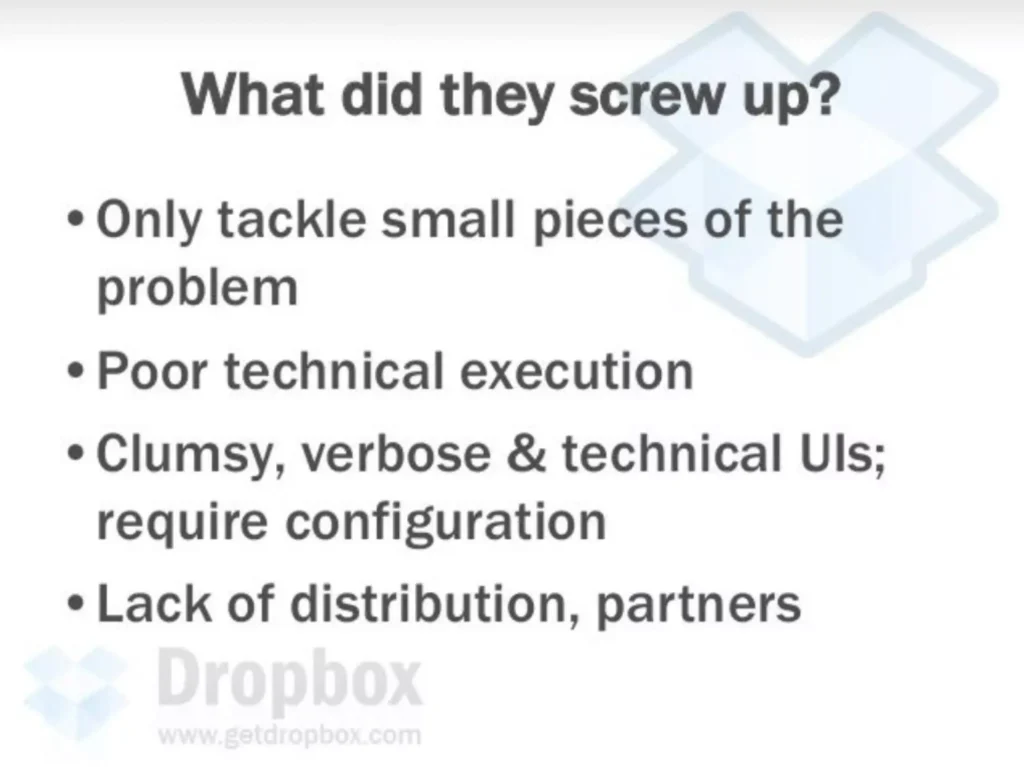
They started pitching the problems with the current competitors to showcase to the reader that they’ve studied the competitors and know their problems exactly.
Slide 12 – USP (Continued)

For the tech geeks out there, they needed to explain how Dropbox excels when it comes to technicalities.
Slide 13 – Dropbox Team
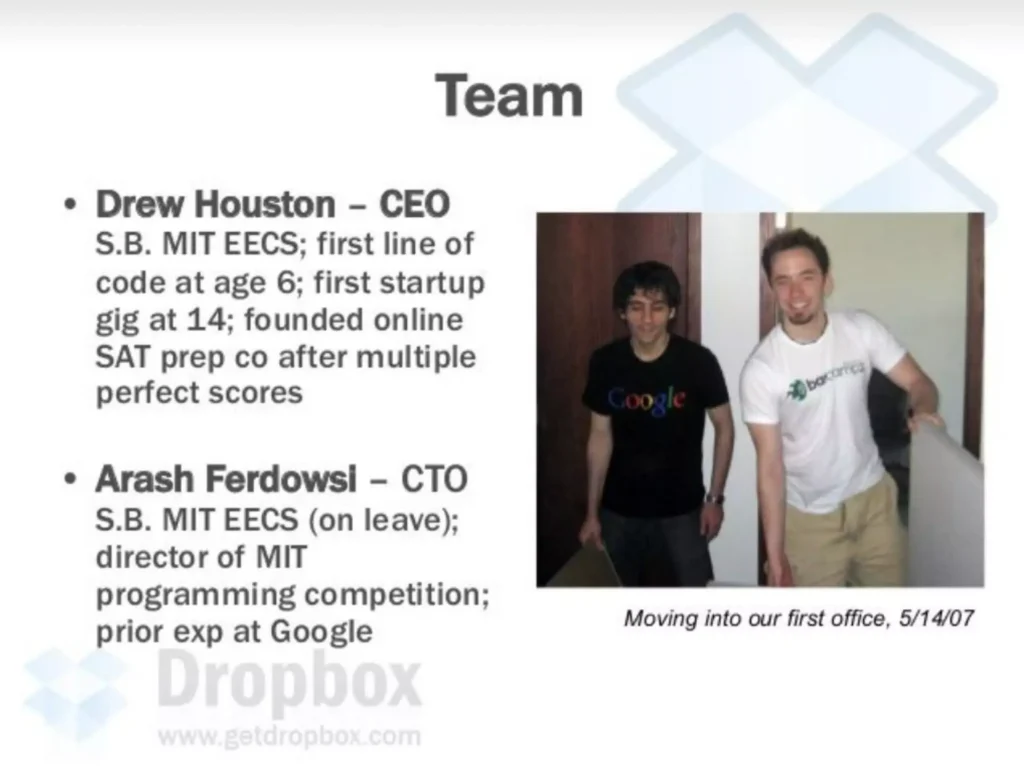
Putting a face to the company is always a smart move. They showcase a casual image of them next each to each other, along with some impressive stats about their experiences.
Slide 14 – Business Model

How does Dropbox intend to monetize? This ought to be answered instantly, as this is a pitch deck that’s probably viewed by investors looking for an ROI. They didn’t have a complex business model. But it did need explanation.
Slide 15 – Product Details
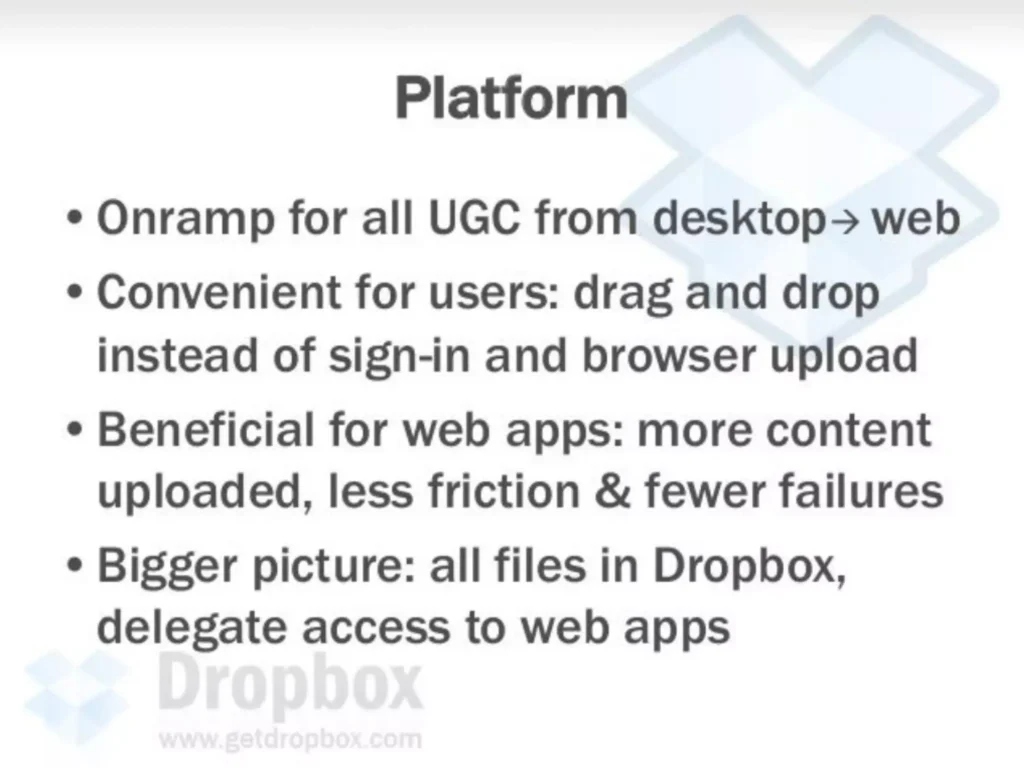
Then they started explaining the vision of Dropbox.
Slide 16 – Dropbox Pitching Traction

This is their traction or what they’re proud of. Remember, this was in seed funding. So there was very minimal traction. But, as you can see, there was quite a solid plan.
Slide 17 – Dropbox Pitching Traction (Continued)

Finally, being ranked as #1 in YC didn’t mean back then what it means right now. But still, it was an impressive feature to be added.
I hope you enjoyed this minor deck analysis. The Dropbox pitch deck is one that you definitely could learn from and apply your ideas with its help. If there is one word that would describe this deck, I’d say this word is simplicity.
Meet The Author Of This Article

I’m Al Anany, the founder and CEO of Albusi.
Dropbox, Airbnb, Uber, Tesla, and many other startups have wonderful stories to be told. I constantly analyze decks here in Albusi, as this is quite a hobby.
I hope this added value to your day and your business life.

